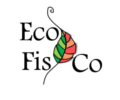Leaf functional plasticity decreases the water consumption without further consequences for carbon uptake in Quercus coccifera L. under Mediterranean conditions
- Autoría:
- Peguero-Pina JJ, Sisó S, Fernández-Marín B, Flexas J, Galmés J, García-Plazaola JI, Niinemets Ü, Sancho-Knapik D, Gil-Pelegrin E.
- Año:
- 2016
- Revista:
- Tree Physiology
- Volumen:
- 36
- Página de inicio - Página de fin:
- 287 - 299
- Descripción:
-
Abstract
The accumulation of epicuticular waxes over stomata in Quercus coccifera L. contributes to a severe reduction in maximum stomatal conductance (gs,max) under Mediterranean (MED) conditions. However, this phenomenon was not observed in this species under temperate (TEM) conditions, which could lead to differences in the ability to assimilate CO2 between the sites. We hypothesise that the overall importance of such a reduction in gs,max on photosynthesis is modulated by other factors affecting carbon gain, mainly mesophyll conductance to CO2 (gm), through a plastic response to changes in environmental conditions (i.e., vapour pressure deficit, VPD, and mean daily quantum flux density, Qint). The results reveal that leaves grown at the TEM site did not show an increased ability for net CO2 assimilation (AN), mainly due to an equal gm at both sites. This fact is explained by a trade-off between an increased conductance of the gas phase (gias) and a reduced conductance of the liquid phase (gliq) at the TEM site compared with the MED site. In spite of the reduction in gs,max at the MED site, transpiration (E) did not diminish during midsummer to the levels of the TEM site due to a higher VPD found at the MED site, yielding a higher water use efficiency (AN/E) at the TEM site. Moreover, photosynthetic nitrogen use efficiency was also higher at the TEM site, indicating these leaves can reach similar values of AN with lower nitrogen investment that those at the MED site. These results suggest that Q. coccifera does not always use the main resources (water and nutrients) at leaf level as efficiently as possible. Moreover, the different patterns of resource use (in particular N), together with the functional plasticity, cannot overcome the morpho-functional constraints that limit photosynthetic activity, even under potentially favourable conditions.



